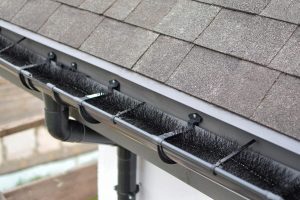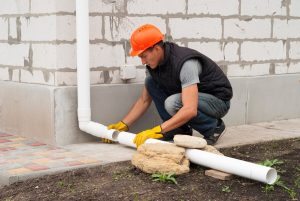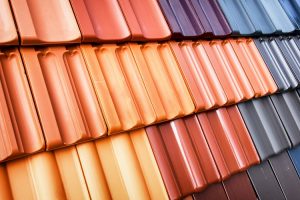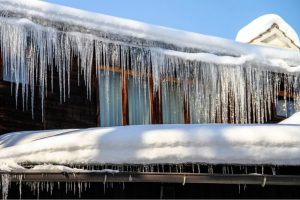How to Pick the Right Shingle Colour for Your Roof
Dec 23, 2023

Your roof is extremely important to the overall appearance of your home, impacting everything from its property value to its curb-appeal, but it is not always easy to choose the perfect colour for your shingles. Even when you’ve narrowed down the material you want to use, there are a multitude of colours and shades available, and you have to pick one that you will be happy with for the next 20 to 30 years. As a result, every house owner, at one point or another, faces the question: ‘What is the most popular roof shingle colour?’. Fortunately, there are some simple guidelines to follow that will help you make your decisions.
Things to Consider When Choosing a Roof Shingle Colour
1. Don’t forget to consider the climate in which you live.
Choosing the right colour shingles can go a long way to keep your energy costs down. If you live in a hot climate, white or light-coloured shingles can help keep the temperature of your home down. In colder climates, dark shingles will absorb more heat and can help melt snow and ice from your roof. Overall, your roof colour can change the temperature in your attic by anywhere from 20 to 40 degrees.
2. Keep in mind the style of your home when choosing your roof shingles colour.
The same style of shingle that complements a Victorian home may not look right with a Cape Cod or modern style home. A ranch house, for example, looks good with a combination of shingle colours, but you would never want to use that with a traditional colonial house. To get an idea of the best style that compliments your home, drive around several neighborhoods to get an idea of which types of shingles go well with similar styles of homes.
3. Think of your roof as something that expresses your personal style.
The roof generally contributes to a large part of your property’s exterior – up to 40%. It can determine the dullness or brightness of the whole property. Choosing roof shingles colours most popular in your region is an option, but you can also consider other uncommon styles and colours. The availability of multi-dimensional hues in modern shingles can help you give the exterior the same attractive finishing you have inside the house. Get creative and showcase your imagination.
4. Do not underestimate the importance of your roof shingles’ colour.
The best colour for roof shingles should create some psychological effect such as making you calm or excited. It should also be fitting for the climatic conditions. For example, it must not become discoloured in hot areas or enable algae growth in humid locations. Some shingle hues also have varying reflections under different lighting conditions, meaning they will contrast or blend differently with the rest of the exterior surfaces. Darker colours absorb more heat, while lighter shades are more reflective. That influences the energy efficiency of the home.
5. Think big.
Your choice of shingle colours should be based on the rest of the exterior décor choices. Shingles look different when paired with the other colours on other surfaces like the siding. Therefore, try not to focus on how the shades look by themselves as you buy them. Do not limit yourself to a few colour options either. Dare to be bold and explore several colour combinations.
Hold some samples against the exterior walls, windows, and doors to get a better perspective. Looking at the colour combinations from a distance will show you the overall effect – whether they blend or clash too much. Contractors usually have sample boards for roof shingles that can help you make the determination.
6. Check which roof shingles colours match and which don’t go with the colour of the house at all.
The colour is a major determining factor when you are thinking about how to pick a shingle colour, regardless of whether you have bricks, siding, or stucco on the external walls. How the shingles appear as the natural light changes during the day makes all the difference. For most people, the main comparison is usually between black shingles vs. light shingles. The darker shades, such as black and grey shingles, provide better aesthetics in colder areas. However, they may look faded or unkempt in places with warmer weather.
If the house has a cream or white hue, the shingles can be brown, blue, green, black, or grey. For brown shingles, what colour siding is preferable? Different shades of brown can blend with varying shades of black, green, grey, or brown shingles. Any shingle colour can work with white houses.
Roof shingle colours for a red brick house are grey, black, green, and dark brown. Different colour hues can work if the brickwork does not have too many patchworks that interfere with the red tone. If the main house exterior is blue, green, black, white, or grey, the roof shingles will not contrast with the red bricks too much.
So, should shingles be lighter or darker than siding? The answer depends on your preference – you can have any style you prefer. However, ensure the colours do not clash too much if the house has many patterns.
7. Take home’s architectural style under consideration.
Shingles colours can either compliment or contrast with a home’s architectural style. You can make a home more interesting by creating a contrast that still blends with the external elements on the property. That means determining the shades that can bring a traditional outlook and those likely to result in a modern appeal. For instance, Plantation, Colonial, Victorian, or Queen Anne style properties tend to go well with traditional roof shingle colours. Examples are black and grey, which you can use in various shades to mimic natural slate. Brown shingles can also be arranged to appear like wood shakes to suit the home style. You could also use green or blue depending on the existing colours on the walls and the effect you hope to get. You can also make the house more eye-catching by mixing up various styles. For instance, shingles with darker shades of brown can blend perfectly with cream siding and a red-bricked chimney.
Weathered grey or brown roofing shingles will be more flattering for properties that have a more casual look, such as those in rural and waterfront areas. Muted green colours also work for homes that have a rustic appeal. The colours enhance the relaxing or calm effect in such surroundings. If it is a log house or the design has weathered wood, black, brown, green, or grey shingles will be perfect. Properties with warmer and inviting finishes can blend with shingles that match the exterior colours.
8. Mix patterns carefully.
When combining different patterns, try to follow the same rules you use when working on the interior décor. The colours should complement each other, and the pattern fusions should include larger vs. smaller prints. For instance, if you have multi-coloured bricks on the property, the shingles should not have too many colour mixtures. If you choose such, ensure the patterns are not the same size as the bricks and not as crowded. Roofing shingles that have subtle colours will be better for houses that have veneers made with large fieldstones. Multiple colour blends that pop and have distinctive textures are likely to clash with the random sizes and the mixture of colours on the facing.
If the colours on the house exterior are bolder, the colours on the roof should be pale and vice versa. For houses with a design that allows multiple facings, you can have them in different colours and choose shingles that blend in with both options. It creates a more distinguished appearance. For example, if the facings are white and brown, the roof can have varying shades of grey and brown.
9. Ask a designer for help.
If, after comparing different colour combinations and talking to your roofing contractor, you still wonder, how do I pick a roof colour, an experienced designer may be of help.
Sometimes narrowing down your options and determining the most appropriate roof shingle colours for your style can be challenging, even when you have visualization tools to help you out. If you cannot decide, a trained and experienced designer can help you out. You will have to pay them for the day as you shop around in search of the perfect shingle colours that will spruce up your home’s exterior. They will take into account the other elements such as trim, siding colour, and paint. The designer will have a more objective look and use their expertise to visualize various outcomes instead of just choosing the most popular roof colours. You may end up with a more dynamic and high-contrasting roof that you would not have achieved by yourself.
10. Take samples before purchasing.
Never buy roofing shingles without sampling several options against your exterior surfaces. Handle the roof the same way you handle paint – by asking for sample chips and holding them against the walls under different lighting conditions. Ask the contractor for shingle samples and hold them against various surfaces, especially if you have multiple colours on the outside walls. Watch the colours to get the exact feel of the final appearance of the roof during different times of the day.
Drive through the neighbourhood as well to check the properties with shingle roofing. Again, the colours may give you more ideas as you observe their appearance change with exposure to different magnitudes of light intensity.
Fortunately, there are many resources at your disposal to help you with your choice. Using a virtual home visualizer tool is a great way to preview what kind of look various shingle types and colours will give your home. You can also always consult the professionals. Your roofing contractor will have years of experience and valuable insight to offer you to help you make your selection.
Maintenance is Key
Of course, once you’ve installed the perfect shingles, you want to do everything you can to maintain them, so that the colour and style that you have chosen will last as long as possible. Depending on the shingle type, a properly maintained roof should last anywhere from 20 to 30 years or more. Here are some tips for keeping your new roof in top shape:
Debris and garbage can pile up on your roof over the course of a year. Take a good look at your roof every few months, especially after a rain storm or high wind. By cleaning debris like leaves or dirt from your roof two to three times a year, you can stop the erosion of your shingles and keep a strong roof.
Check for moss or algae if you have trees or foliage growing on your house or near it. Both can add to the deterioration of your shingles. Overgrown branches that come into contact with your roof can also grow underneath shingles, causing them to lift and come off.
Mind your eavestroughs. Keep them clean so that water can flow down without backing up along your roofline. Be on the lookout for ceramic granules in your eavestrough, since that can be an indication of your shingles getting worn down and needing to be replaced. If you experience a lot of granule shedding, check your shingles for bald spots and replace them immediately.
Check your shingles on all sides of your home at least a couple of times a year. Even if the front of your roof looks fine, a different side could be deteriorating due to heavy winds or prolonged periods of sunlight.





